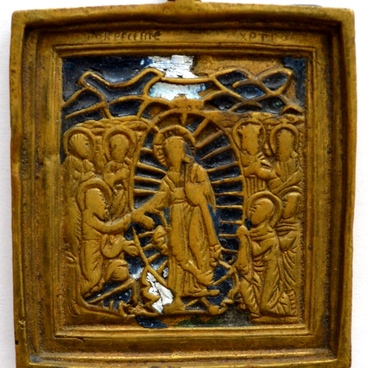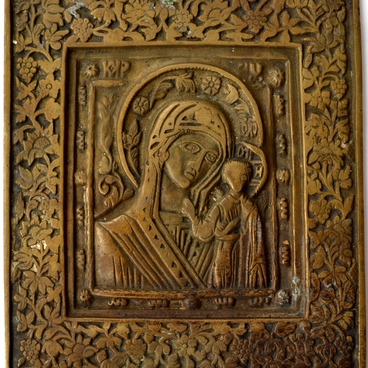The Mother of God icon was cast from copper alloy in the 19th century; it is a copy, a replica of the original Nizhny Novgorod Mother of God ‘of the Passion’. It received its name because of the depiction of the implements of Lord’s suffering: the Cross symbolising Golgotha where Jesus was crucified, the sponge with which his parched lips were wetted, and the lance with which one of the Roman legionnaires pierced the Saviour’s chest.
The implements are shown in the hands of the angels on either side of the Mother of God. They predict Jesus Christ’s death of a martyr. One angel is holding a cross and a piece of towel cloth and the other – a cane, a sponge and a lance. Baby Jesus is looking at one of the angels; such representation means that Christ foresaw his fate.
The implements are shown in the hands of the angels on either side of the Mother of God. They predict Jesus Christ’s death of a martyr. One angel is holding a cross and a piece of towel cloth and the other – a cane, a sponge and a lance. Baby Jesus is looking at one of the angels; such representation means that Christ foresaw his fate.

